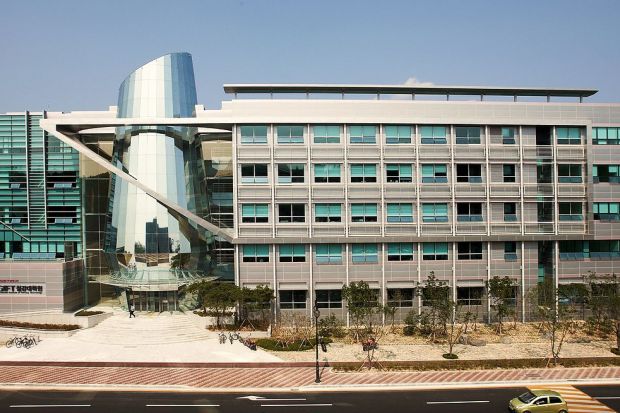POSTECH: Effective CO2 Electroreduction Using Electrocatalysts with Dual-Atom Iron Sites
Effective conversion of carbon dioxide (CO2) – the culprit of global warming – into valuable chemicals provides an attractive pathway to achieving carbon neutrality. Single-atom catalysts (SAC) have shown unique potential in the electrocatalytic reduction of CO2 (CO2RR), but their structural simplicity has led to limitations. As catalytic activity increases, the efficiency of conversion also increases, rendering it an important task to design a highly active catalyst for the field of electrochemical catalysts.
To this, a POSTECH research team led by Professor Jeong Woo Han, Dr. Ying Wang, and Ph.D. candidate Byoung Joon Park in collaboration with a team led by Dr. Kug-Seung Lee at the Pohang Accelerator Laboratory (PAL) has developed a technology to design a dual-atom iron (Fe) pair electrocatalysts.
Electrochemical catalysts react with chemical reactants on the catalyst surface to produce useful synthetic gases or electricity via reduction or synthesis. During this catalysis, the adsorption energy of intermediate*1 generated must be maintained at an appropriate level to maximize activity. If the reactant binds too strongly to the catalyst surface, the activation is lowered and if too weakly bound, the catalyst fails to play its role of accelerating the reaction.
To this, the research team constructed an electrochemical catalyst with a single-atom iron (Fe1-N-C) or dual-site iron (Fe2-N-C) anchored on nitrogen-doped carbon matrix. The atomic unit structure of the dual-atom catalyst was verified using the third-generation radiation accelerator. Through computational chemistry-based simulations, the researchers confirmed that the binding energy between the dual-atom iron pairs can control the adsorption strength of carbon monoxide (CO), an intermediate of the CO2RR. Optimizing this adsorption strength can enhance the conversion efficiency by increasing the CO2RR activity.
The experimental analysis confirmed that the carbon dioxide conversion efficiency of the dual-atom catalyst was 2.8 times higher than that of the single-atom catalyst.
“This study has demonstrated that the dual-atom catalyst can be synthesized through a rather simple process,” explained Professor Jeong Woo Han who led the study. “This catalyst is not only applicable in conversion of carbon dioxide but also for various electrochemical reactions including oxygen reduction reaction, hydrogen evolution reaction, water electrolysis, and nitrogen reduction reaction.”
Recently published as the supplementary cover paper of ACS Energy Letters, a highly authoritative journal in the field of energy, this study was conducted with the support from the Creative Materials Discovery Program and the Mid-career Researcher Program of the National Research Foundation of Korea.

